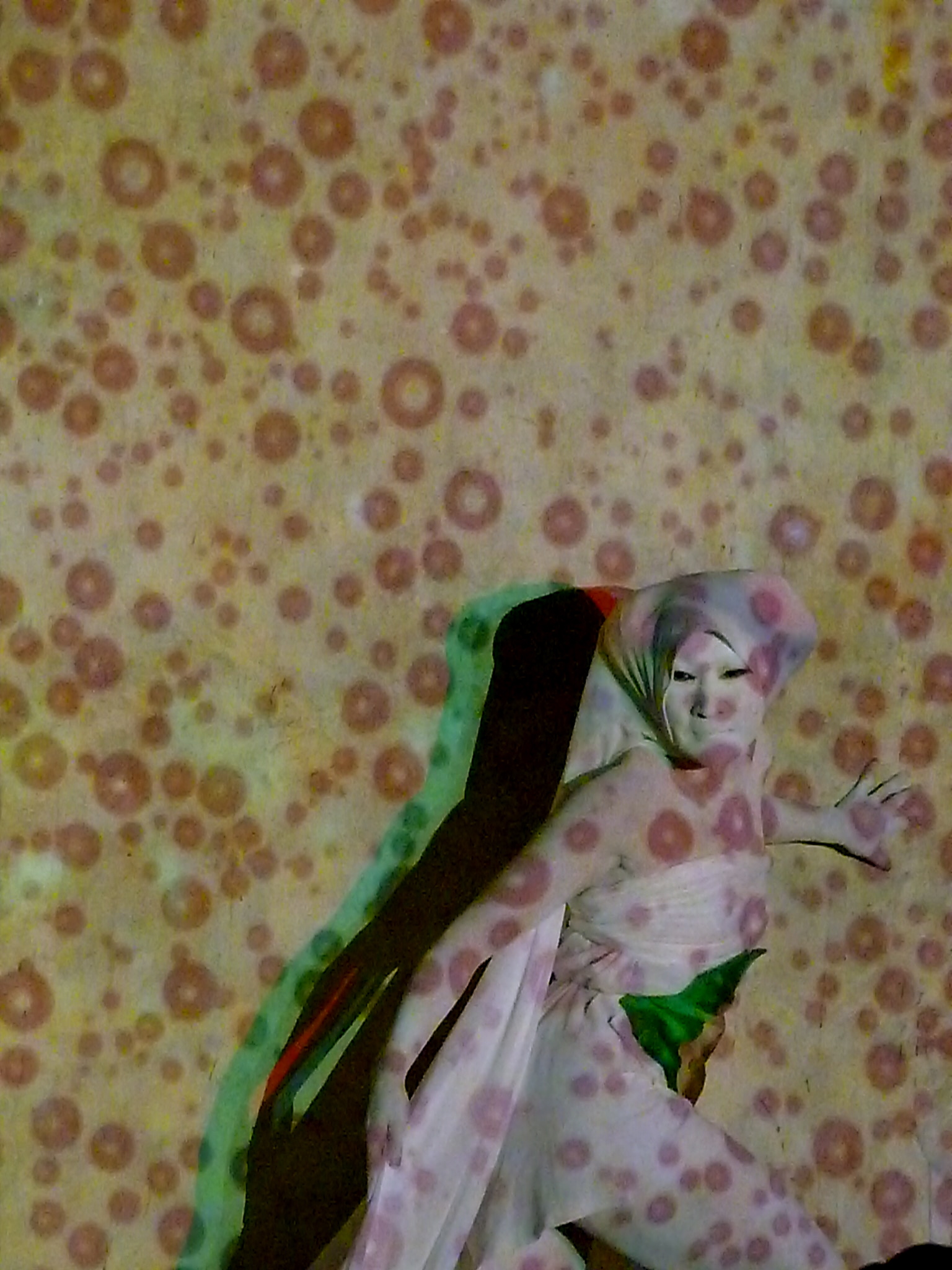After spending a couple of semesters researching Butoh, I have finally translated my research into a physical praxis. Because this workshop is more or less open to anyone, our focus is on body awareness via various breathing and visualization exercises. Some people see dance as a universal language-and falling head first into this workshop with little knowledge of “dance” terminology in Japanese confirmed this notion. The first two workshops were simply watch and copy, but by the third workshop I could focus less on the physical and more on the mental part of the exercises. In Butoh, one’s thought process is equally, if not more, important than the physical aesthetics, and that it itself is difficult to grasp for most people.
Movement, whether we are conscious of it or not, initiates with a breath. The aim for many of the warm up exercises involves becoming aware of our breath and channeling such energy to various parts of the body. Each movement initiates from an inhale, is held, and returns with an exhale. Finding your body’s center after each breath is essential for gaining complete awareness and control.
The metaphors and imagery we translate into our bodies creates a sensation for us as movers, and alters the space we occupy. Through this mutual change in time and space, we become attune to our individual bodies in space. For example, in one exercise, we had an image for various body parts, and being aware of all at once, we walked through space:
1. A waterfall is flowing from the crown of your head down your back to the floor. 2. Your favorite flower is at your chest, and your nose takes notice and smells. 3. A 1000 year old forest is on both shoulders. 4. There is a lake in front of your stomach and a man lives at the shore. 5. There are rock formations and mountains in front of your knees. 6. A young family with a new born baby lives behind your knees.
I continuously question the meaning of conceptual body practices, and in performance, how much of the movement is still strictly personal and therefore goes unnoticed by the audience? After seeing my Butoh teacher perform, and considering society’s expectation of “performance”, how much does she, as a performer, sacrifice to satisfy those expectations? I have found it wonderful that the Japanese movement artists/visual artists who I’ve met or researched don’t give two cents about what society expects from them as artists. They have their own reasons for doing what they do, and they don’t owe an explanation to anyone.


We’ve talked about it before, but butoh sounds fascinating to be a part of. The conceptual body practices – the metaphors – how much of an impact do you think they have on the performance of the dance itself? Would you say that a “butoh performance” that was based solely on copying the physical and technical aspects of the dance would produce a satisfactory performance, or are these metaphors the essence of butoh?
On the subject of Japanese language, though, what was it like trying to understand the metaphors as they were being presented in the workshop? Did you find reconciling your cultural perception and your instructor’s 考え方 difficult? Would you say that differences in your visualizations and those of your instructor (which might be different, due to the culture) add to the dance, or even flavor the butoh with your essence as a performer?
So as I was telling you earlier, it is the praxis itself that is the dance. The embodiment of such metaphors/imagery/stories creates a body awareness that take precedence over the physicality of the movement. In fact, most times everyone has their eyes closed (in the workshop), and thus zero attention is given to the physical aesthetics. So to answer to question of mimicking, that is exactly what this movement practice is not. In many modern performances derived from this 考え方, sometimes there is no audience, or it’s a movement installation, so the performance is for the self, your peers (if any), and the space. In terms of interpretation, of course it varies from mover to mover, and in that sense a metaphor/image is personalized to each of us. I can’t necessarily speak for Butoh, but in my experience, it is those nuances in people’s interpretations that assist the choreographic process. For example, when I am creating a piece, I will give my ensemble a task or an image and give them ten minutes to just improvise 🙂 I’ll watch this and pick movements I like and alter them slightly. This type of piece then becomes just as much theirs as it is mine, which appeals to me because the final piece ends up being slightly different every time it is performed. But enough of that…haha